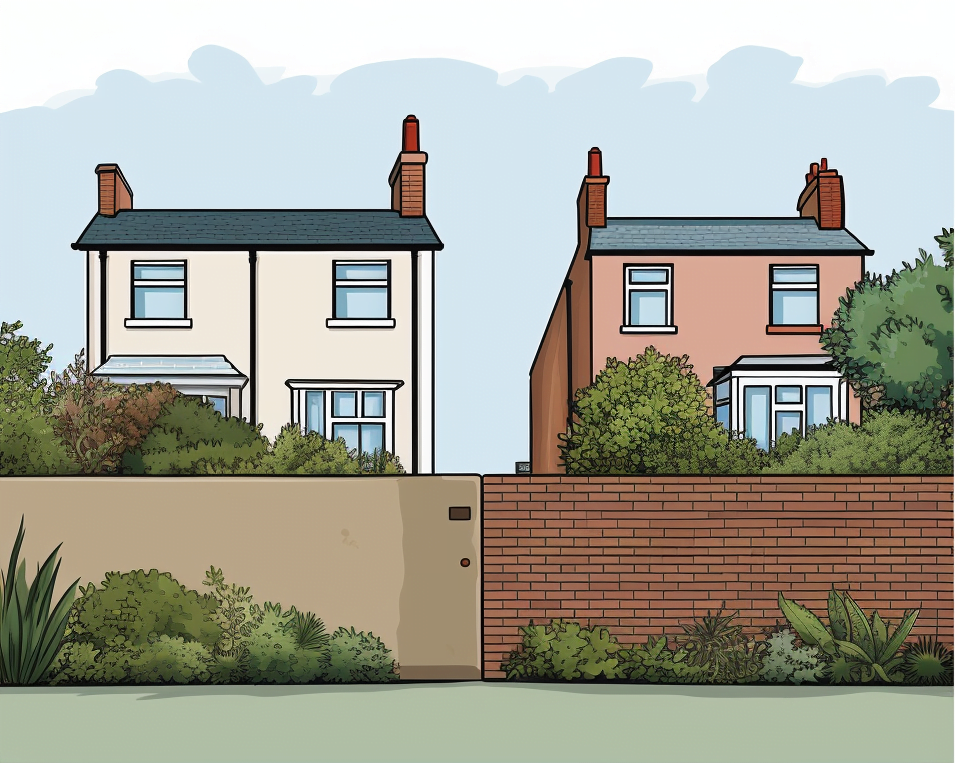- Understanding Walls and Boundaries
- Shared Walls Explained
- Garden Boundary Walls
- Supporting Walls
- Building Exteriors as Boundaries
Understanding Walls and Boundaries
When discussing boundaries, it’s essential to understand the different types of walls that can be involved:
- Shared Walls: These are walls within a structure that connect two properties and act as the boundary between them.
- Garden Boundary Walls: These are walls within a garden that distinguish two separate land parcels owned by different individuals.
- Supporting Walls: These walls support land that’s elevated on one side compared to the other, and they also function as boundary walls.
- Building Exteriors: Sometimes, a boundary might run alongside the exterior of a building.
Shared Walls Explained
Under the Law of Property Act 1925, if a structure is designated as a shared wall, it remains vertically divided between the respective owners. Each owner has specific rights over the structure. This section doesn’t delve into building works related to shared walls but focuses on determining the boundary within a shared wall. Typically, with terraced or semi-detached houses, it’s safe to assume the boundary runs through the middle of the shared wall. However, there are instances where the boundary might be on one side of the wall, especially in city centres.
Garden Boundary Walls
A wall separating two land parcels might belong entirely to one landowner. If it’s on the boundary, both landowners jointly own it, termed as a “party fence wall”. The Party Wall Act 1996 differentiates between a “party fence wall” in the garden and a shared wall connecting two houses. A boundary wall is constructed entirely on one owner’s land, while a party fence wall stands on both lands’ boundary.
Supporting Walls
These walls are crucial when there’s a difference in ground level on either side. They need to be sturdier than regular walls due to the weight they support. Issues arise when such a wall is on a boundary, and its ownership becomes a point of contention, especially during repairs.
Building Exteriors as Boundaries
In some cases, a building might be constructed right up to the land’s boundary. Here, the boundary typically runs along the building’s external wall. The eaves and footings might extend over or under the neighbouring land, but the space between them belongs to the adjacent land.
Note: This article is intended for informational purposes only and does not constitute legal advice. Always consult with a legal professional before taking any action.

